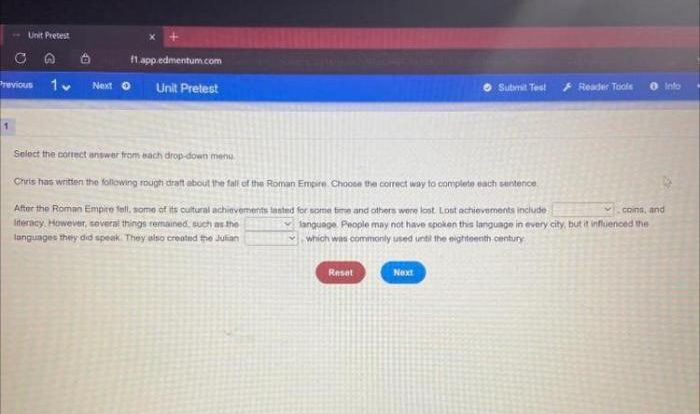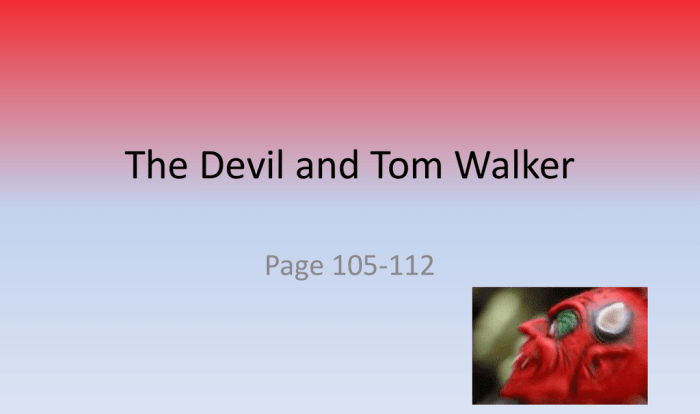Amy tan mother tongue pdf – Amy Tan’s “Mother Tongue” PDF offers a compelling exploration of the intricate relationship between language, identity, and cultural differences. Tan’s essay delves into the challenges faced by immigrants and second-generation Americans in preserving their native language, and the ways in which language can both empower and marginalize individuals.
Through personal anecdotes and storytelling, Tan illuminates the cultural differences between herself and her mother, highlighting the misunderstandings that can arise due to these differences. She also explores the power of storytelling to bridge cultural gaps and foster understanding.
Introduction
Amy Tan’s essay “Mother Tongue” is a groundbreaking piece of Asian American literature that explores the complexities of language, identity, and culture. Through personal anecdotes and linguistic analysis, Tan illuminates the unique challenges and triumphs faced by Asian American immigrants and their children as they navigate the intersections of their native and adopted languages.
The essay has had a profound impact on the field of Asian American literature, sparking a dialogue about the diverse experiences and perspectives of Asian Americans. It has also raised awareness of the importance of language in shaping identity and the need for inclusive language policies in education and society.
Significance in Asian American Literature
Tan’s essay has been widely recognized for its groundbreaking contribution to Asian American literature. It was one of the first essays to explore the complexities of Asian American identity through the lens of language. Tan’s personal experiences as a Chinese American immigrant and her struggles with English as a second language resonated with many Asian American readers who had similar experiences.
The essay has also been praised for its literary merit. Tan’s vivid prose and skillful use of language create a compelling and emotionally resonant narrative. Her ability to capture the nuances of language and its impact on identity has earned her recognition as one of the most important contemporary Asian American writers.
Language and Identity
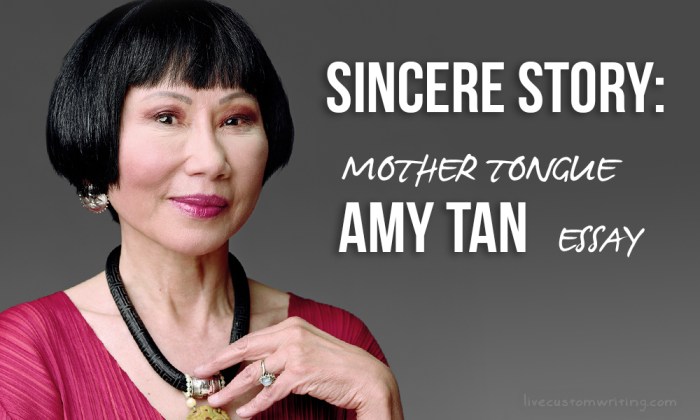
Amy Tan explores the intricate relationship between language and identity through the experiences of her mother and herself as immigrants and second-generation Americans. She highlights the challenges faced by immigrants in preserving their native language and the impact of language on their sense of belonging.
Challenges of Preserving Native Language
Immigrants often struggle to maintain their native language in a new cultural environment. Tan’s mother, for instance, gradually loses her Chinese language skills due to limited opportunities for practice and the pressure to assimilate into American society. The loss of her native language affects her sense of self and connection to her cultural heritage.
Language as Empowerment
Despite the challenges, language can also empower individuals. Tan’s mother uses her broken English to communicate her needs and express her opinions, demonstrating the resilience and adaptability of immigrants. Language allows her to navigate the new world and maintain a sense of agency.
Language as Marginalization
However, language can also be a source of marginalization. Tan’s mother’s broken English is often misunderstood or dismissed, leading to feelings of isolation and exclusion. The dominant language of the majority culture can create barriers and perpetuate stereotypes, limiting the opportunities of those who do not speak it fluently.
Cultural Differences and Misunderstandings
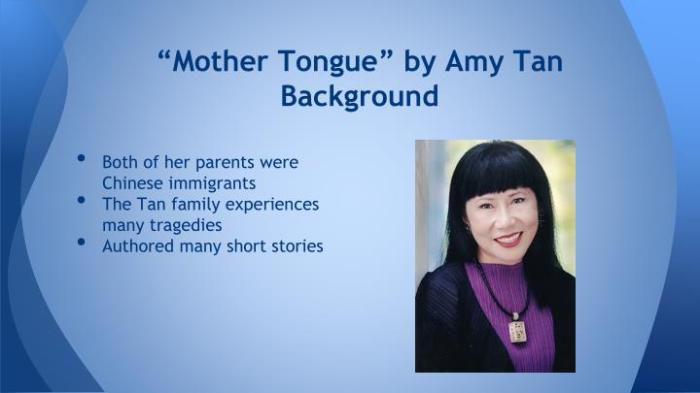
Amy Tan’s essay “Mother Tongue” explores the cultural differences and misunderstandings that arise between her and her mother due to their distinct linguistic backgrounds and cultural experiences. These differences manifest in various aspects of their communication and interactions, leading to challenges and complexities in their relationship.
Language as a Source of Connection and Division, Amy tan mother tongue pdf
Language serves as both a bridge and a barrier in Tan’s relationship with her mother. While it allows them to communicate and share their thoughts, it also highlights their cultural disparities. Tan’s mother’s “broken” English, characterized by grammatical errors and colloquialisms, reflects her immigrant status and limited formal education.
Tan, on the other hand, uses “Standard English,” the language of power and prestige in American society. This linguistic divide creates a sense of separation between them, as Tan struggles to understand her mother’s nuances and her mother feels inadequate in expressing herself.
Cultural Differences in Communication Styles
Beyond language, cultural differences also impact their communication styles. Tan’s mother adheres to traditional Chinese values that emphasize respect for authority and indirect communication. She often speaks in a roundabout manner, using proverbs and subtle hints. Tan, accustomed to American directness and explicitness, finds her mother’s communication style confusing and frustrating.
These cultural disparities lead to misunderstandings and missed connections between them.
The Impact on Their Relationship
The cultural differences and misunderstandings that arise between Tan and her mother have a significant impact on their relationship. Tan feels a sense of alienation from her mother, struggling to relate to her experiences and perspectives. Her mother, in turn, feels misunderstood and undervalued by her daughter.
These challenges create a barrier between them, hindering their ability to fully connect and understand each other.
Amy Tan’s “Mother Tongue” PDF is a thought-provoking essay that explores the complexities of language and identity. If you’re looking for additional insights into language and culture, I recommend checking out the apes unit 2 study guide . This comprehensive resource provides an in-depth analysis of human evolution and the impact of culture on our species.
Returning to Amy Tan’s essay, her personal experiences with language offer valuable lessons for understanding the role it plays in shaping our thoughts and experiences.
The Power of Storytelling
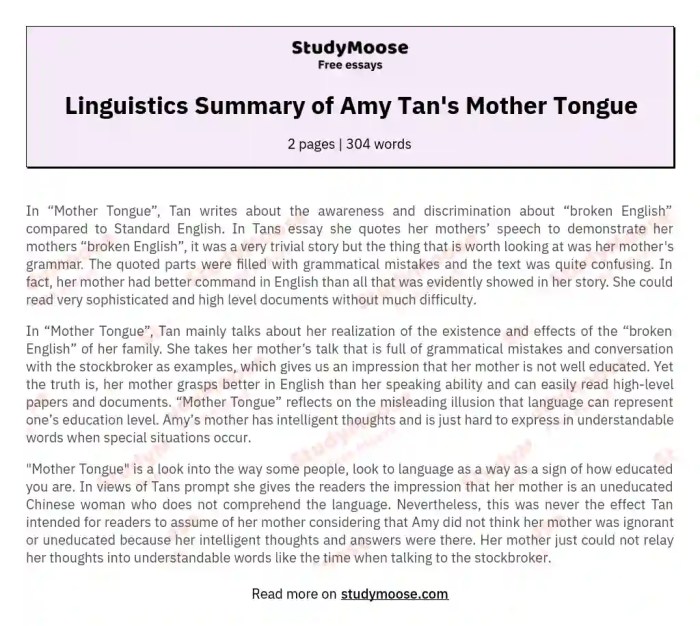
Amy Tan’s essay “Mother Tongue” is a powerful exploration of the complexities of language, culture, and identity. Storytelling plays a central role in conveying her experiences and perspectives, allowing her to share insights that transcend cultural boundaries.
One of the most significant stories in the essay is the “fish Chekhov” anecdote. Tan recounts her mother’s difficulty in expressing herself in English, leading to a misunderstanding that resulted in her receiving a fish instead of a book by Chekhov.
This seemingly humorous incident highlights the profound impact of language barriers on communication and understanding.
Storytelling and Cultural Gaps
Tan’s storytelling ability bridges cultural gaps and fosters understanding. By sharing her personal experiences and perspectives, she allows readers from diverse backgrounds to connect with her struggles and triumphs. Her stories create a common ground that transcends linguistic and cultural differences, enabling readers to empathize with her experiences and gain insights into the challenges faced by immigrants and individuals from marginalized communities.
Literary Techniques and Devices: Amy Tan Mother Tongue Pdf

In “Mother Tongue,” Amy Tan employs a range of literary techniques and devices to convey her message about the complexities of language, identity, and cultural differences. These techniques enhance the narrative’s impact and effectively communicate Tan’s experiences and insights.
Metaphors
Tan uses metaphors to create vivid imagery and draw parallels between different concepts. For instance, she compares her broken English to “cracked porcelain,” highlighting the fragility and vulnerability of her mother’s language.
Similes
Tan also employs similes to emphasize similarities between two ideas. She likens her mother’s English to “a clumsy foot in a shoe,” suggesting that it was both inadequate and uncomfortable.
Anecdotes
Tan incorporates anecdotes and personal experiences to illustrate her points and make them more relatable. By sharing stories from her own life, she allows readers to connect with her struggles and understand the nuances of her experiences.
Rhetorical Questions
Tan poses rhetorical questions to engage readers and provoke thought. For example, she asks, “Is there any other way to measure brokenness but to test it with language?” This question challenges readers to consider the relationship between language and identity and the ways in which language can both reflect and shape our experiences.
Imagery
Tan uses sensory imagery to evoke a vivid sense of place and atmosphere. She describes the “stale, tired air” of her mother’s apartment and the “chopsticks stuck into a bowl of rice” on her mother’s table, creating a vivid depiction of her mother’s life and the challenges she faced.
Irony
Tan also employs irony to highlight the contradictions and complexities of her experiences. For instance, she describes her mother’s “limited” English as a source of both embarrassment and pride, demonstrating the multifaceted nature of language and its impact on our lives.
Personal Reflections and Impact

Amy Tan’s “Mother Tongue” profoundly resonated with me, offering a poignant exploration of the intricate interplay between language, identity, and cultural differences. Through Tan’s personal anecdotes and insightful observations, the essay illuminated the challenges and triumphs of navigating multiple linguistic and cultural landscapes.
The essay’s exploration of the power of language to shape identity was particularly impactful. Tan’s vivid descriptions of her mother’s “broken” English and her own struggles with standard English highlighted the ways in which language can both empower and marginalize individuals.
It challenged my assumptions about the relationship between language proficiency and cultural authenticity, prompting me to consider the diverse and multifaceted ways in which people express themselves.
Impact on Understanding of Cultural Differences
Furthermore, “Mother Tongue” deepened my understanding of the profound cultural differences that can exist within families and communities. Tan’s experiences as a Chinese American woman living in a predominantly white society illustrated the challenges of navigating conflicting cultural expectations and the importance of embracing one’s own unique cultural heritage.
Influence on Writing and Creative Expression
Tan’s essay has also had a significant impact on my own writing and creative expression. Her evocative storytelling and use of language inspired me to explore my own cultural background and personal experiences in my writing. I am now more mindful of the ways in which language can convey both explicit and implicit messages and strive to use language in a way that is both authentic and inclusive.
Essential Questionnaire
What is the main argument of Amy Tan’s “Mother Tongue”?
Tan argues that language is a fundamental aspect of identity and that the loss of one’s native language can lead to a loss of cultural identity.
How does Tan use storytelling to convey her experiences and perspectives?
Tan uses storytelling to illustrate the challenges she has faced as an immigrant and a second-generation American. She also uses storytelling to bridge cultural gaps and foster understanding.
What are some of the literary techniques that Tan uses in “Mother Tongue”?
Tan uses a variety of literary techniques in “Mother Tongue,” including metaphors, similes, and personal anecdotes.

